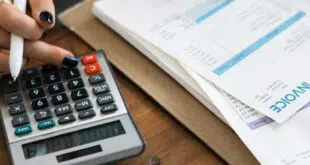Banking giant JPMorgan Chase & Co. will pull the plug on its Chase Pay mobile app in early 2020, though the payment service will continue online and in some merchant apps.
Chase disclosed the coming changes in an email notice to customers Wednesday. The notice gives no reason or exact date for the closure of the app, which Chase launched in November 2016. In an emailed statement to Digital Transactions News, however, Eric Connolly, head of Chase Pay, said “the strategy for Chase Pay has not changed.”
“Our goal is to provide value to consumers and our merchant clients through the combination of our retail, card, and merchants-services businesses,” Connolly said. “The change we are announcing is one that is intended to focus our efforts where we see consumer behavior trending and merchants investing. We see our biggest opportunity in working with merchants to provide easy payment solutions for customers through the Chase Pay button online and directly in merchant apps, which has seen double-digit growth for the last three years.”

The bank, which has a huge merchant-acquiring operation as well as the nation’s largest credit card portfolio, declined to disclose Chase Pay’s transaction volume or how many customers had downloaded the app.
Chase Pay will continue to as a payment option on merchant Web sites that display the Chase Pay logo and through merchant apps, as well as through PayPal. The service also will continue in the mobile apps of Shell, Phillips 66, Conoco, 76, and Gulf gasoline retailers. Some Chase Pay features already are available in the Chase banking app and others may either move to the Chase app or reside within merchant apps, Chase said.
The payment service was not a big hit with Chase customers, according to data from New York City-based 451 Research.
“Less than one in 10 Chase cardholders had used Chase Pay online or in-store in the past 90 days,” 451 Research payments analyst Jordan McKee says by email, citing his firm’s first-quarter Voice of the Connected User Landscape survey.
When it debuted, however, Chase Pay looked like it could be a formidable challenger to the general-purpose Apple Pay, Google Pay, and Samsung Pay mobile-payment services. Chase had 94 million Visa cardholders at the time, and early merchant acceptors included Starbucks and Best Buy, with many more added later. The app uses Quick Response codes for point-of-sale payments in contrast to the near-field communication technology used by Apple Pay, Google Pay and Samsung Pay.
McKee isn’t surprised by Chase’s announcement.
“As evidenced by similar news from Wells Fargo and Capital One, the days of bank-branded wallets are coming to an end,” he says. “Operating-system based wallets like Apple Pay and Google Pay have an inherent advantage from a user experience and customer on-boarding standpoint. This makes it challenging for bank-branded wallets like Chase Pay to compete given they must encourage cardholders to hunt down and download yet another app to their smart phones. Chase Pay’s utilization of QR codes to enable transactions was another factor limiting adoption given the integration required for merchants.”
Chase Pay could not access the NFC chip on Apple Inc.’s popular iPhone and thus “was forced to use a QR code interface, which requires merchant support, and apparently they were not successful in getting enough of that,” Aaron McPherson, vice president for research operations at Marlborough, Mass.-based Mercator Advisory Group Inc., tells Digital Transactions News by email.
It would have been “difficult at best” for Chase Pay to succeed against “the Pays,” as Apple Pay, Google Pay, and Samsung Pay are often called, adds Thad Peterson, senior analyst at Boston-based Aite Group LLC. That won’t change even with the app discontinued, he says. “There are a lot of different ways to buy stuff online, and the Chase offering will add to the clutter at the moment of purchase,” he says by email.





